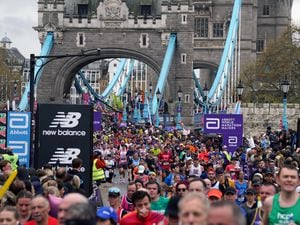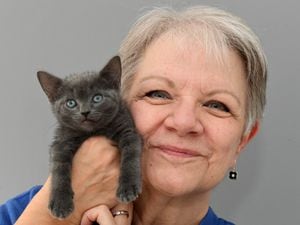What’s your emergency? Life as a 999 operator
Emergencies can come with no warning and calling 999 for an ambulance can often mean someone’s life is in danger.
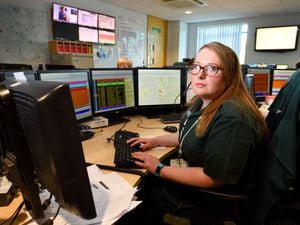
So when that call comes through, a trained team has to rapidly decide what action is needed to ensure the patient is given the best chance of recovery – or survival.
Every day incident command desk supervisor Lucy Parrott works as part of the team at West Midlands Ambulance Service’s control room in Brierley Hill helping to ensure people receive the appropriate emergency care they need.
West Midlands Ambulance Service has two control rooms in Brierley Hill and Stafford that handle between 3,500 and 4,000 calls a day.
On one side of the room are the staff who answer the 999 calls and are responsible for recording the right information and offering advice or reassurance to the person on the other end of the line.
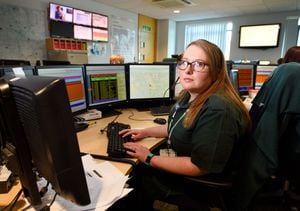
Anyone who saw last year’s BBC One documentary Ambulance which provided a snapshot of the work of the service will have seen that this is a job that is not for the faint-hearted and can mean dealing with life or death emergencies such as a heart attack or drug overdose.
Essential details about the patient’s condition and their exact location have to be logged accurately onto the computer system to ensure the right level of response.
They may, in extreme cases, have to talk the caller through an emergency procedure, such as clearing an obstruction from someone’s airway.
Or, if they feel an ambulance isn’t required, they might need to advise someone to visit their GP or emergency department instead.
Then there are the dispatchers who use a triage system to assess the type of emergency and determine the response needed, for example ambulance, rapid response car or air ambulance.
When a call-out becomes more complex or resource intensive such as a motorway pile-up or a suspected drowning, then it’s passed on to the incident command desk to coordinate.
“It’s for anything bigger than a normal 999 call. This can be anything from serious road traffic collisions and drownings to something having the potential to be a terrorist incident,” explains Lucy, who has been working for the ambulance service for almost 10 years.
She first started as a call assessor after wanting to find a job ‘with purpose’ but knowing she didn’t want to be a paramedic. She later moved on to become an ambulance dispatcher before last year training as an incident command desk supervisor.
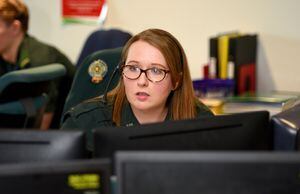
As part of Lucy’s role, she will co-ordinate any specialist services such as the air ambulance or the Hazardous Area Response Team, which operates in challenging and often dangerous situations such as collapsed buildings or working at height.
After they’ve been dispatched she will set up a ‘talk group’ on their radios so that the different teams attending the call-out can communicate with each other.
“This is really important because it means the first person to arrive can update those who are on the way so everybody knows what to expect,” says Lucy, who lives with her police officer husband Gavin in Walsall.
She will receive regular updates from the scene so she knows whether extra resources and crews are required and will liaise with other services such as the fire service and police. Sometimes emergency treatment or procedures are needed at the scene before patients can be taken to hospital.
“It’s all about managing the emergency so that the patient gets the most appropriate response and care,” says the 32-year-old.
With the overall number of calls to the ambulance service continuing to rise, it probably doesn’t come as a surprise to learn that there is no such thing as a typical day for the incident command desk.
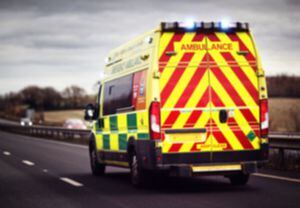
“You can predict the pattern of the jobs because of the weather or the time of day when there is more traffic on the roads like when the children get out of school at 3pm or 4pm but no two days are ever the same,” says Lucy.
One thing the team has noticed in recent years is a significant increase in the number of stabbings and shootings across the region.
“Ten years ago if one of us was dealing with a stabbing, we would all be like meerkats listening in to what was going on but now we’ve become desensitised to it really because they are becoming more common. Still terrible but not as rare as they once were,” Lucy says.
But dealing with so many emergencies and situations that many of us couldn’t bear to think about can be hard at times.
“The nature of our job means we are dealing with the worst of the worst. We are dealing with the most serious and most upsetting jobs.
“I can’t say I never take it home. One of the most harrowing for me was a child that had drowned at a reservoir. Through the radio talk group, I could hear the mothers wailing. I could hear them but I couldn’t do anything,” she says.
Despite the serious nature of the job, she says it’s ‘enormously rewarding’ and there are some brighter moments for the team. “It’s satisfying when we go to a job like someone having a cardiac arrest and the patient is in a bad way but we get a really positive outcome.
“Last year someone was having a cardiac arrest at Wolverhampton train station. The staff had done some CPR and there was a defibrillator at the station. By the time we got there the guy was breathing again.
“That was fantastic and that’s even before we got there. We just needed to make sure he was stable and get him to hospital,” Lucy says.
It can be frustrating for the team when a call is made for an ambulance in a situation when one isn’t required.
“These are precious resources so it’s important that we don’t waste them. People do need to be more responsible with their own care,” says Lucy.
“We don’t want to be in a position where we can’t send an ambulance to someone in a dire emergency.”
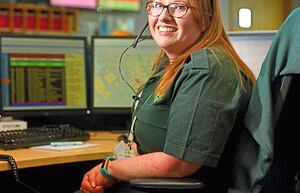
How the team respond to a 999 call . . .
West Midlands Ambulance Service receives around 3,500 to 4,000 ‘999’ calls every day at its emergency operations centres in Brierley Hill and Stafford.
Call assessors take the 999 call and are responsible for recording the right information, often under difficult circumstances and offering advice or reassurance to the caller or patient. They will enter these details on to a computer system which categorises the seriousness of the illness or injury, to ensure that the most critical patients receive the fastest response.
While dispatchers co-ordinate the best response to the 999 call by looking at where the nearest ambulance, helicopter, paramedic officer or specialist team are in the area.
Each call is categorised – some will result in telephone advice and referral from the team of highly experienced clinical support desk paramedics, others will result in a blue-light response.
Around five per cent of calls are dealt with by the paramedics in the control room.
Another 33 per cent are treated at the scene and only 55 per cent are actually taken to a treatment centre such as an A&E or a minor injuries unit.
The ambulance service serves a population of 5.6 million people covering an area of more than 5,000 square miles.
This is made up of the Black Country, Staffordshire, Shropshire, Worcestershire, Herefordshire, Warwickshire, Coventry and Birmingham.
Employing more than 5,000 staff, the service provides around 300 ambulances as well as rapid response vehicles across the region every day.
The fleet of ambulances is prepared in one of its 15 hubs and responds from a network of more than 60 community ambulance stations.
All of the rapid response vehicles have a 4×4 capability and many are staffed by advanced paramedics who are treating an increasing number of patients in the comfort of their own home, without the need to go to hospital.
The service also provides non-emergency transport across some parts of the region for those patients who are unable to travel to hospital unaided because of their medical condition or clinical need.
Staff carry out more than one million of these non-emergency patient journeys each year.

